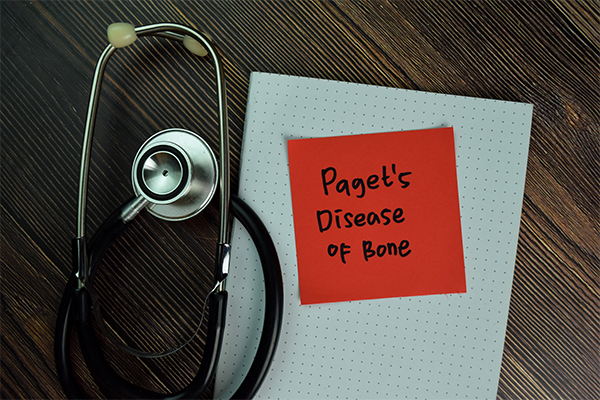
When it comes to bone health, most people are familiar with conditions like osteoporosis or arthritis. But there’s another lesser-known disease that can affect bones in unusual ways — Paget’s Disease of Bone. Though not as common, it can lead to serious complications if left unmanaged. Let's dive into what this condition is, why it occurs, how to spot it, and what treatments are available. You can book an appointment with our expert rheumatologists in Gurgaon for timely diagnosis and personalised treatment.
Synopsis
What Is Paget’s Disease of Bone?
Paget’s disease of bone is a chronic disorder that disrupts the normal cycle of bone remodeling—the process through which old bone is replaced by new bone tissue. In people with Paget’s disease, this process becomes disorganised:
Bone is broken down too quickly.
The body responds by producing new bone too fast.
This new bone is weak, larger, and deformed.
As a result, bones may become brittle, misshapen, and painful.

Commonly Affected Bones:
Paget’s disease can affect one or multiple bones, with the most commonly involved areas being:
-
Pelvis
-
Skull
-
Spine
-
Femur (thigh bone)
-
Tibia (shin bone)
Also Read: 5 Common Causes of Spinal Cord Pain
What Causes Paget’s Disease?
The exact cause is unknown, but research suggests a combination of genetic and environmental factors:
-
Genetics: It tends to run in families. If a close relative has it, your risk increases.
-
Viral Infections: Some theories suggest that a slow-acting viral infection may trigger the disease in genetically predisposed individuals.
It is more common in older adults (typically over 50) and is slightly more prevalent in men.
Symptoms of Paget’s Disease
Interestingly, many people with Paget’s disease may not show any symptoms, and it’s often discovered incidentally on X-rays or blood tests. However, when symptoms do appear, they may include:
How Is It Diagnosed?
Your rheumatologists in Gurgaon may use the following to confirm Paget’s disease:
-
X-rays: Reveal bone deformities or abnormalities.
-
Bone Scan: Shows increased bone activity.
-
Blood Tests: Elevated alkaline phosphatase (ALP) levels — a marker of increased bone turnover.
-
MRI/CT Scans: For detailed imaging if nerve involvement or tumors are suspected.
Treatment Options
Although there is no cure, treatment can help manage symptoms and prevent complications:
1. Medications
Medications can help slow abnormal bone remodeling.
2. Physical Therapy
Helps maintain joint mobility and strengthens muscles.
3. Surgery
May be required if there are:
-
Bone fractures
-
Severe arthritis in affected joints
-
Deformities causing pressure on nerves
Lifestyle Tips for Managing Paget’s Disease
While medical treatment is essential for controlling Paget’s Disease of Bone, incorporating smart lifestyle choices can make a big difference in managing symptoms, preventing complications, and promoting long-term bone health.
1. Eat a Bone-Healthy Diet
-
Calcium-rich foods: Milk, yogurt, paneer, leafy greens (like spinach), sesame seeds (til), almonds.
-
Vitamin D sources: Fortified dairy, mushrooms, eggs, and moderate sunlight exposure.
-
Protein: Helps maintain muscle strength around weakened bones — include dal, legumes, tofu, and lean meats (if non-vegetarian).
2. Engage in Safe Physical Activity
-
Maintains joint mobility
-
Strengthens muscles
-
Reduces pain and stiffness
-
Improves balance to prevent falls
-
Low-impact activities like walking, swimming, or cycling
-
Stretching and yoga to improve flexibility
-
Strength training under supervision to support bone structure
-
Avoid high-impact sports or heavy lifting that could cause fractures in weakened bones.
Also Read - Importance of Exercise For Healthy Bones
3. Prioritise Rest and Recovery
-
Don’t ignore fatigue — your body may need more rest due to abnormal bone turnover.
-
Take short breaks during physical tasks to avoid strain.
-
Use supportive cushions or bedding to reduce pressure on painful areas, especially if the spine or pelvis is involved.
4. Fall Prevention at Home
-
Because bones in Paget’s disease are more fragile, preventing falls is critical:
-
Remove rugs, clutter, or wires from walkways.
-
Install grab bars in bathrooms and stair railings.
-
Use night lights and non-slip footwear.
-
Consider using a cane or walker if balance is affected.
5. Avoid Smoking and Limit Alcohol
- Smoking impairs bone healing and increases bone loss.
-
Alcohol can interfere with calcium absorption and medication efficacy. Limit intake or avoid altogether.
Conclusion
Paget’s Disease of Bone may sound rare, but for those affected, it can have a significant impact on daily life and mobility. Fortunately, with early diagnosis and the right treatment plan, most people can lead normal, active lives. Visit our orthopedics hospital.
If you or a loved one experiences unexplained bone pain or deformities — especially after the age of 50 — it’s wise to seek medical evaluation. Book an appointment with our expert orthopedist now!
FAQ's
It primarily affects people over the age of 50, and it’s more common in men than women. Those with a family history of the disease are at higher risk.
Yes. If left untreated, it can cause bone deformities, fractures, arthritis, hearing loss, nerve compression, and in rare cases, bone cancer (osteosarcoma).
No. While both affect bones, osteoporosis causes bones to become thin and brittle due to decreased bone density, whereas Paget’s disease involves abnormal bone remodelling, making bones larger but weaker and structurally unsound.
Yes. With proper medical management, regular monitoring, and a healthy lifestyle, most people with Paget’s Disease can lead active, fulfilling lives with minimal disruption.





















 4 Min Read
4 Min Read















